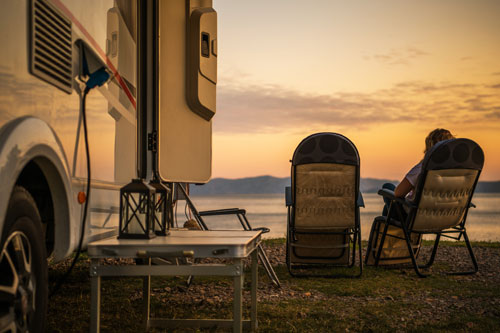

Let’s face it: we’re all a little stir crazy after three months of Zooming with relatives and staring at four walls. But how do we get out of the house in a safe way this summer?
Your best bet might be an RV or camping trip, according to some experts. If you’re ready to hit the road, be sure to pack your favorite food so it lasts. The best way to do that?
Use dry ice.
Dry ice makes it possible for you to transport frozen or perishable food in a sturdy, quality cooler, helping you to avoid the leaks, mess, and constant need for replenishment that comes with using regular ice (when dry ice melts, it simply turns to gas – no puddling involved!).
Need dry ice for your next RV or camping adventure? We have it! Visit one of our convenient locations to pick up yours today.